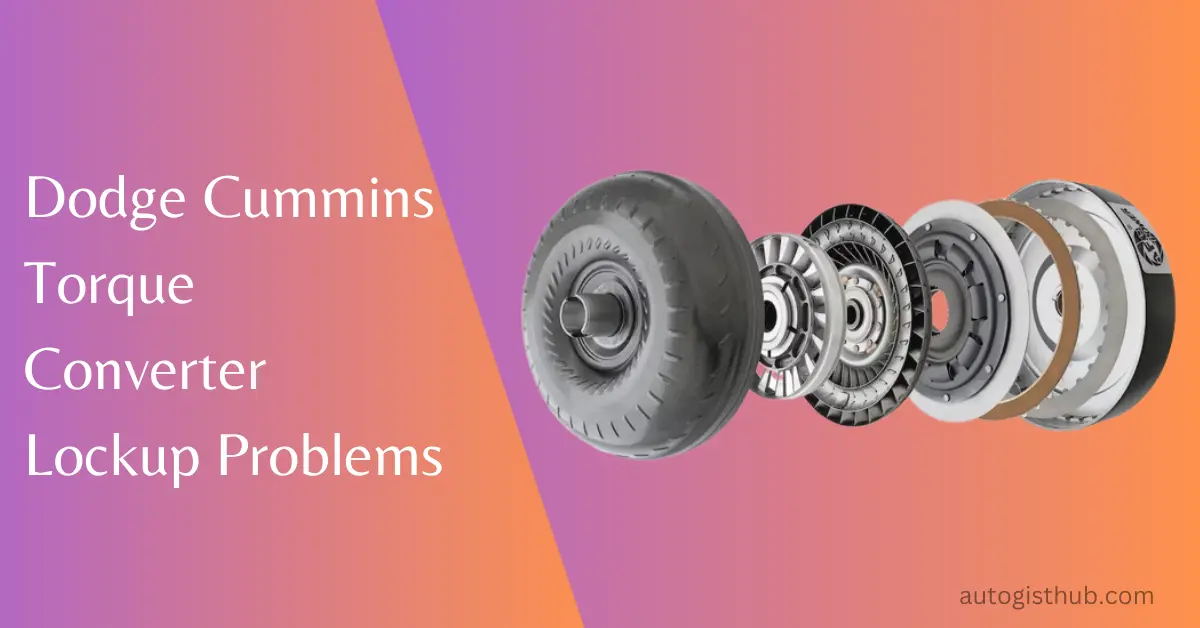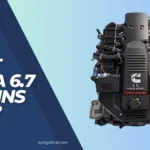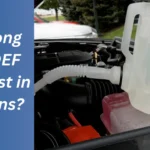The torque converter is a critical component of the drivetrain that connects the engine to the transmission, and when it fails to lock up, it can lead to various issues, such as excessive heating, slipping, and poor fuel economy.
Identifying the underlying cause, whether it’s a faulty solenoid, sensor, or mechanical problem, is crucial in addressing these lockup issues effectively. Professional guidance, diagnostic tools, and expert repairs are recommended to ensure the torque converter functions optimally and eliminates any related problems.
What is a Torque Converter?
Definition and Explanation
A torque converter is an essential component of an automatic transmission system in vehicles, including the Dodge Cummins. In simple terms, it is a fluid coupling that allows the transfer of power from the engine to the transmission. This mechanism ensures smooth and efficient operation of the vehicle, enhancing overall performance.
Role in the Transmission System
The torque converter plays a crucial role in the transmission system of a vehicle. Its primary function is to transmit power from the engine to the transmission while allowing the engine to continue running even at idle. This enables the vehicle to come to a complete stop without stalling.
The torque converter functions through four main components:
- Pump
- Turbine
- Stator
- Transmission fluid
The pump, which is directly connected to the engine, drives transmission fluid into the turbine. As the fluid flows through the turbine, it causes the turbine to rotate. The rotating turbine then transfers power to the transmission, enabling the vehicle to move forward.
The stator is another component within the torque converter that helps optimize the efficiency of power transmission. It redirects the flow of fluid back to the pump, allowing the converter to multiply torque during acceleration. This torque multiplication aids in the acceleration of the vehicle, ensuring smooth and swift shifting of gears.
To summarize, the torque converter is responsible for transmitting power from the engine to the transmission in an automatic vehicle. It acts as a bridge between these two crucial components, allowing the engine to continue running at idle, preventing stalling, and ensuring smooth acceleration and gear shifting.
The Importance of Torque Converter Lockup
When it comes to the performance of your Dodge Cummins, the torque converter lockup plays a crucial role. Understanding the importance of torque converter lockup will help you address any problems that may arise with this component.
In this section, we will explore how torque converter lockup works, as well as the benefits it brings to your vehicle.
How Torque Converter Lockup Works
The torque converter is a key component in an automatic transmission system. Its main function is to transmit power from the engine to the rest of the drivetrain. In simple terms, the torque converter allows the engine to keep running even when your vehicle is at a standstill.
It does this by using a fluid coupling mechanism, where engine power is transmitted through a special fluid-filled assembly. However, during normal operation, the torque converter can cause certain inefficiencies such as slippage and heat generation.
Torque converter lockup is a feature that addresses these issues. When the lockup engages, the torque converter essentially creates a direct mechanical link between the engine and the transmission. This means that power transmission becomes more efficient, resulting in improved performance and fuel efficiency.
Benefits of Torque Converter Lockup
Torque converter lockup offers several benefits for your Dodge Cummins. Let’s take a look at two major advantages:
Improved fuel efficiency
When the torque converter lockup engages, the power from the engine is directly transmitted to the transmission. This eliminates any power loss caused by slippage, leading to improved fuel efficiency. With torque converter lockup, your Dodge Cummins can maintain higher speeds at lower RPMs, reducing fuel consumption and saving you money at the gas pump.
Reduced heat generation
Another advantage of torque converter lockup is the reduced heat generation. When the torque converter operates in its fluid coupling mode, there can be significant heat build-up. This heat not only affects the efficiency of the torque converter but also puts added stress on the transmission system.
With the lockup engaged, the direct link between the engine and the transmission minimizes heat generation, resulting in better overall performance and increased longevity of your Dodge Cummins.
By understanding how torque converter lockup works and appreciating its benefits, you can take the necessary steps to address any problems that may arise. In the next sections, we will dive deeper into specific torque converter lockup issues and how to troubleshoot them effectively.
Common Symptoms of Dodge Cummins Torque Converter Lockup Problems
One of the most frustrating issues that Dodge Cummins owners may encounter is torque converter lockup problems. When the lockup function of the torque converter doesn’t work properly, it can cause various symptoms that affect the performance and drivability of your vehicle.
In this section, we will explore the common symptoms of Dodge Cummins torque converter lockup problems and how they can impact your driving experience.
Rough Shifting
Rough shifting is a typical symptom of torque converter lockup problems in Dodge Cummins trucks. When the lockup clutch doesn’t engage or disengage smoothly, you may feel a jolt or jerk during gear shifts.
This can be especially noticeable when accelerating or decelerating. The rough shifting can not only be uncomfortable but also put extra stress on the transmission components, potentially leading to further issues.
Engine Stalling
If you experience engine stalling when coming to a stop or idling, it could be a sign of torque converter lockup problems. When the lockup clutch fails to disengage properly, it can cause the engine to stall as it struggles against the resistance. This can be a serious safety concern, especially when it happens in traffic or on busy roads.
Erratic Rpm Fluctuations
Another symptom of torque converter lockup problems in Dodge Cummins trucks is erratic RPM fluctuations. When the lockup clutch is not functioning correctly, it can cause the engine RPM to fluctuate abnormally while driving at a steady speed.
You may notice the RPM jumping up and down unexpectedly without any input from the accelerator pedal. These fluctuations can affect the overall performance and fuel efficiency of your vehicle.
Transmission Overheating
Torque converter lockup problems can also lead to transmission overheating in Dodge Cummins trucks. When the lockup clutch doesn’t engage or disengage properly, it can cause excessive friction and heat buildup in the transmission.
This can result in higher than normal transmission fluid temperatures, leading to potential damage to the internal components. Overheating can also trigger the transmission to go into a protective mode, reducing power and performance.
If you are experiencing any of these common symptoms of Dodge Cummins torque converter lockup problems, it is essential to have your vehicle inspected and diagnosed by a qualified mechanic. Ignoring these symptoms can lead to further damage and costly repairs. Addressing torque converter lockup problems promptly will help ensure the longevity and reliability of your Dodge Cummins truck.
Possible Causes of Torque Converter Lockup Problems
When your Dodge Cummins experiences torque converter lockup problems, identifying the possible causes is crucial for effective troubleshooting and resolving the issue. By addressing the root cause behind these problems, you can prevent excessive wear and tear on your torque converter, transmission, and other critical components of your vehicle. Let’s explore some of the common causes of torque converter lockup problems:
Faulty Solenoids
Faulty solenoids are a common reason for torque converter lockup problems in Dodge Cummins vehicles. Solenoids are responsible for controlling the flow of transmission fluid and engaging the torque converter clutch.
When solenoids become damaged or fail to function properly, they can prevent the clutch from engaging or disengaging at the appropriate times. As a result, your torque converter may remain locked up or fail to lock up entirely, causing transmission issues.
Malfunctioning Torque Converter Clutch
The torque converter clutch plays a vital role in the operation of your Dodge Cummins’ transmission. When the clutch malfunctions, it can lead to torque converter lockup problems.
A worn-out or sticking torque converter clutch may fail to engage or disengage as intended, resulting in excessive heat buildup, poor fuel economy, and transmission slipping. Addressing any issues with the torque converter clutch is essential for resolving lockup problems.
Low Transmission Fluid Level
The proper amount of transmission fluid is vital for the smooth operation of your Dodge Cummins’ torque converter. When the fluid level is low, it can impede the proper function of the torque converter clutch, resulting in lockup problems.
Additionally, low fluid levels can lead to inadequate lubrication, causing increased friction and heat within the transmission. Regularly checking and maintaining the correct fluid level is crucial to prevent torque converter lockup issues.
Tcm (transmission Control Module) Issues
The Transmission Control Module (TCM) is responsible for controlling various aspects of your vehicle’s transmission system, including torque converter lockup. If the TCM malfunctions or experiences software glitches, it can lead to lockup problems.
Issues with the TCM may prevent the proper engagement or disengagement of the torque converter clutch, resulting in erratic shifting, decreased performance, and even transmission damage. Diagnosing and resolving any TCM-related problems is necessary to resolve torque converter lockup issues.
By addressing these possible causes of torque converter lockup problems, you can ensure the smooth operation and longevity of your Dodge Cummins’ transmission system. Whether it’s a faulty solenoid, a malfunctioning torque converter clutch, a low transmission fluid level, or TCM issues, understanding the underlying cause is the first step towards resolving the problem successfully.
Diagnosing Dodge Cummins Torque Converter Lockup Problems
The Dodge Cummins torque converter lockup problems can be frustrating and inconvenient for vehicle owners. These issues occur when the torque converter fails to engage or engage properly, causing jerking or slipping sensations while driving. Diagnosing these problems is essential to ensure proper functioning of the transmission and prevent further damage to the vehicle.
Transmission Diagnostic Scan
One of the first steps in diagnosing Dodge Cummins torque converter lockup problems is performing a transmission diagnostic scan. This scan involves connecting a scanner tool to the vehicle’s OBD-II port to retrieve error codes stored in the transmission control module (TCM). These error codes provide valuable insights into the underlying issues with the torque converter and other transmission components.
Fluid Deterioration Analysis
Fluid analysis is another crucial step in diagnosing torque converter lockup problems. Over time, the transmission fluid can deteriorate due to heat, contamination, or wear and tear. This can result in reduced lubrication and inefficient torque converter performance.
By analyzing the condition of the transmission fluid, technicians can determine if it needs to be flushed and replaced or if there are any signs of debris or contaminants that may be affecting the torque converter’s operation.
Visual Inspection of Transmission Components
Performing a visual inspection of the transmission components is vital in diagnosing torque converter lockup problems. This involves examining various parts, such as the torque converter itself, the transmission pump, and the valve body, for any signs of damage or wear.
Additionally, technicians will check for loose or worn out connections, leaks, or any other visible abnormalities that may be contributing to the torque converter issues. To summarize, diagnosing Dodge Cummins torque converter lockup problems involves a transmission diagnostic scan to retrieve error codes, fluid deterioration analysis to assess the condition of the transmission fluid, and a visual inspection of transmission components.
By conducting these diagnostic procedures, technicians can pinpoint the root cause of the torque converter lockup problems and recommend the appropriate repairs or replacements to ensure optimal performance of the vehicle.
Repairing Dodge Cummins Torque Converter Lockup Problems
One of the most common issues faced by Dodge Cummins owners is torque converter lockup problems. The torque converter lockup clutch is an essential component of the transmission system, responsible for transferring engine power to the drivetrain efficiently.
When this clutch malfunctions, it can cause issues such as excessive slippage, gear shifting problems, and decreased fuel efficiency. However, fret not! In this section, we will discuss two common methods for repairing Dodge Cummins torque converter lockup problems: solenoid replacement and torque converter clutch repair.
Solenoid Replacement
The torque converter lockup solenoid is a small but crucial part of the vehicle’s transmission system. It controls the engagement and disengagement of the torque converter lockup clutch. If you suspect that a faulty solenoid is the culprit behind your torque converter lockup problem, the first step is to replace it. Here is a step-by-step guide on how to replace the solenoid:
- Start by locating the transmission control module. It is usually located near the engine compartment or underneath the vehicle.
- Carefully disconnect the electrical connectors attached to the transmission control module.
- Next, locate and remove the old solenoid by unscrewing it from the transmission body.
- Install the new solenoid in place of the old one, ensuring a secure fit.
- Finally, reconnect the electrical connectors to the transmission control module.
Once the solenoid is replaced, test drive your vehicle to check if the torque converter lockup problem is resolved. If the issue persists, it may be time to consider torque converter clutch repair.
Torque Converter Clutch Repair/replacement
If solenoid replacement doesn’t fix the torque converter lockup problem, it might indicate an internal issue with the torque converter clutch itself. Repairing or replacing the torque converter clutch requires a bit more expertise and time but can be a viable solution to the problem. Here are the steps involved:
- Diagnostic assessment: Start by thoroughly diagnosing the torque converter clutch using specialized diagnostic tools. It is important to identify the exact cause of the problem before proceeding with repairs or replacement.
- Torque converter removal: If the clutch needs to be repaired or replaced, the torque converter will have to be removed from the transmission. This can be a complex task and might require professional assistance.
- Clutch repair/replacement: Depending on the condition of the torque converter clutch, it might be feasible to repair certain components, or a complete replacement might be necessary. Consult with a qualified technician or automotive specialist for the most appropriate course of action.
- Torque converter reinstallation: Once the clutch is repaired or replaced, carefully reinstall the torque converter back into the transmission following the manufacturer’s instructions.
- Test and inspect: After completing the repairs, perform a thorough test drive to ensure that the torque converter lockup problem is addressed. Additionally, inspect the transmission system for any other potential issues that might require attention.
Remember, if you are not confident in performing these repairs yourself, it is always wise to seek professional help. Attempting complex repairs without the necessary expertise can lead to further damage and costly repairs down the line. So, whether it’s a solenoid replacement or torque converter clutch repair, ensure that you prioritize the overall well-being of your Dodge Cummins by seeking proper assistance.
FAQs for Dodge Cummins Torque Converter Lockup Problems
The symptoms of a torque converter locking up include high engine RPM at idle, loss of power, shuddering or jerking when shifting gears, and difficulty in accelerating. It may also cause overheating of the transmission and unusual noises like whining or rattling.
Torque converters may stay locked up due to issues with the solenoid, valve body, or transmission fluid. It could also be caused by electrical problems, overheating, or incorrect installation. It’s best to have a professional mechanic diagnose and fix the problem to ensure optimal performance.
Yes, you can disable torque converter lockup.
Conclusion
To sum up, dealing with torque converter lockup problems in your Dodge Cummins can be frustrating. However, by understanding the common causes and symptoms, as well as the available solutions, you can effectively address these issues and enjoy a smoother driving experience.
Remember to stay proactive with regular maintenance and seek professional assistance to ensure optimal performance and prevent further damage. Drive safely and confidently with your Dodge Cummins!




